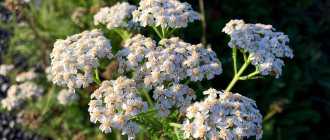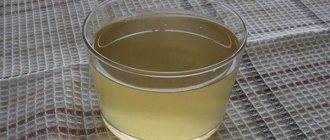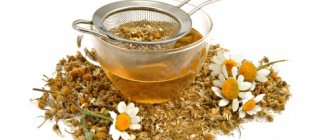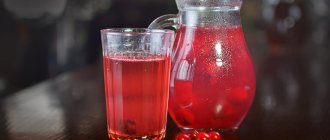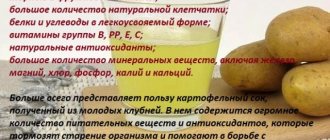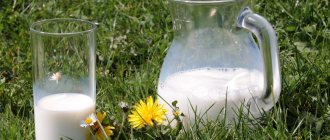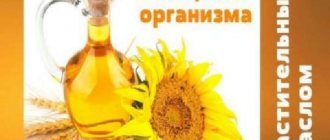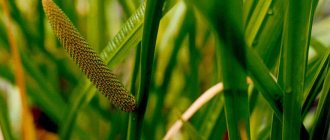Calendula (or marigold, crocos) has many beneficial properties and can be used alone or as part of herbal mixtures in the treatment of pancreatitis and many other diseases of the digestive system that often accompany this ailment. This medicinal herb is widespread in ornamental floriculture, is unpretentious and is often grown in country houses, garden plots and flower beds. As a rule, its petals or flower baskets are used for medicinal purposes.
The healing properties of calendula are due to its chemical composition:
- Polysaccharides;
- Kalenden;
- Organic acids: ascorbic, pentadecyl, salicylic, malic;
- Essential oil;
- Coumarins;
- Phytoncides;
- Flavonoids and carotenoids: lycopene, flavoxanthin, citraxanthin, rubixanthin, flavochrome, carotene, violaxanthin;
- Polyphenols;
- Nitrogen-containing mucus;
- Resins;
- Tannins;
- Slime;
- Triterpene saponin;
- Arnidiol and faradiol triterpenedols;
- Minerals: potassium, zinc, iron, calcium, magnesium, etc.
How does calendula affect the body during pancreatitis?
Treatment of the pancreas with calendula is recommended if it is necessary to normalize the secretion of bile or in the treatment of concomitant pathologies of the digestive system - hepatitis, cholecystitis, gastritis, peptic ulcers, colitis, etc. The substances contained in the plant help eliminate spasms of the smooth muscles of the biliary tract and eliminate the likelihood of stagnation and reflux bile in the gland tissue, reduce the load on this organ and reduce the risk of exacerbation of pancreatitis.
In addition to a pronounced choleretic effect, this medicinal plant has a powerful anti-inflammatory effect and has an analgesic, regenerating, bactericidal and sedative effect. Treatment with calendula can increase the secretory activity of the stomach, eliminate many dyspeptic symptoms and diarrhea. In most cases, reviews of the use of this plant for pancreatitis are positive.
- Choleretic;
- Antispasmodic;
- Anti-inflammatory;
- Bactericidal;
- Increases the secretory activity of the stomach;
- Normalizing digestion;
- Regenerating;
- Sedative.
In addition to the treatment of pancreatitis and diseases of the digestive system, calendula is often used as part of complex therapy:
- Sore throat, tonsillitis and other respiratory diseases;
- Dental diseases;
- Gynecological diseases;
- Menopausal disorders;
- Diseases of the nervous system;
- Hypertension;
- Heart diseases;
- Diseases of the urinary organs;
- Skin ailments.
Why is calendula used in the treatment of pancreas?
The healing properties of calendula have been known to people since ancient times, and in our country this plant grows everywhere. The flowers of this plant are collected for medicinal purposes.
Preparations containing calendula have both external and internal use. In pharmacology, this plant is valued for its antiseptic, anti-inflammatory, and wound-healing properties. Calendula-based products have an antispasmodic, choleretic, calming effect, and also help lower blood pressure and increase immunity.
The plant is widely used in the treatment of diseases of internal organs and the nervous system, and also as a general tonic and immunomodulatory agent. Calendula is often prescribed for pancreatitis and inflammatory processes in the gastrointestinal tract.
The healing properties of calendula for cholecystitis and pancreatitis lie in its ability to reduce swelling of the inflamed pancreas, relieve pain and have a strong bactericidal effect.
Calendula for pancreatitis of the pancreas is prescribed for several purposes:
- To prevent the disease in the presence of prerequisites for the development of pancreatitis;
- For treatment to relieve the disease, it is prescribed to patients with an acute form of the disease;
- For the treatment of the chronic stage of pancreatitis, usually as part of herbal preparations.
Features of the use of calendula for pancreatitis
When prescribing drugs based on this medicinal plant, one should take into account not only the medicinal properties of calendula, but also contraindications for use in pancreatitis.
Doctors include contraindications:
- pregnancy period;
- the presence of allergic reactions that exclude the use of phytotherapeutic drugs;
- simultaneous use of certain drugs (barbiturates);
- exacerbation of peptic ulcer;
- low blood pressure;
- heart disease, namely: bradycardia;
- use in combination with sedatives based on herbs such as mint, motherwort, valerian;
- not prescribed for children under 12 years of age.
In addition, it is very important to strictly follow the dosage prescribed by your doctor.
Calendula for pancreatitis: use, preparations, recipes for tincture and decoction
Marigold - a universal medicinal plant
Calendula has many beneficial qualities that have been used in medicine for a long time. Therefore, it is important to know the medicinal properties and contraindications to the use of calendula for pancreatitis - inflammation of the pancreas.
Calendula or marigold is a garden ornamental plant whose petals range in color from light yellow to bright orange. To prepare medicinal raw materials, petals or complete flower heads with sepals are collected. Marigolds are harvested during the flowering period (from June to late autumn).
Attention! Marigold petals contain a large amount of carotene (vitamin A), which determines the color of the plant. It has a beneficial effect on metabolism, vision and skin condition.
Treatment of the pancreas with calendula is used for inflammation of the organ - pancreatitis. There are many reasons for the occurrence of the pathological process. All of them cause acute or chronic tissue damage, which causes disruption of the digestive organs and endocrine system.
Among the medicinal effects of calendula, which promote recovery processes in pancreatitis, are:
- anti-inflammatory effect;
- activation of regeneration (restoration) of damaged cells;
- stimulation of the secretion of digestive juices;
- increased discharge of bile;
- relieving spasms and reducing pain;
- improvement of microcirculation in the pancreas.
The simultaneous use of home and pharmacy remedies speeds up the healing process and enhances the effect of the drugs.
Calendula for pancreatitis is used in the form of various pharmaceutical forms: tinctures, decoctions and infusions. The duration of treatment, frequency of doses per day, and type of medication are determined by the attending physician. Given the high biological activity of marigolds, self-medication can lead to adverse consequences.
A popular pharmaceutical product produced in glass bottles is an alcohol tincture of calendula. The price of the drug is low, and its effectiveness has been proven for a long time.
Pharmacy alcohol tincture
The medicine is used for pancreatitis as part of combination therapy. Due to the high content of triterpene alcohols and saponins, it has a stimulating effect on the organs of the digestive tract.
Attention! Calendula lowers blood pressure, so its use is recommended for people suffering from hypertension.
Herbal infusions
Calendula is included in various herbal preparations, ready for use and sold in pharmacy chains. Similar to the tincture, the therapeutic course and collection number are recommended by the doctor. To treat pancreatitis, a herbal collection is used, which includes:
- calendula;
- yarrow;
- peppermint;
- chamomile;
- tansy.
Herbal infusions are produced in convenient filter bags or in bulk. This dosage form is brewed with boiling water and taken according to the attached instructions.
Traditional medicine offers many recipes for preparing medicines from marigolds. Raw materials can be purchased at pharmacies or prepared independently. Only those flowers are used that grow in environmentally friendly places and are not treated with pesticides that destroy weeds or pests.
For inflammation of the pancreas, use:
- Infusion from a collection of medicinal herbs. Mix dried marigold and chamomile flowers, sage leaves and strings, taken 1 teaspoon each. Pour boiling water over one tablespoon of the mixture. Leave until cool. Take the infusion 2 tablespoons 4 times a day.
- Marigold decoction. A tablespoon of dried flowers is poured with water (250 ml) and brought to a boil. The broth is left to simmer over low heat for 10 minutes. The prepared solution is infused under the lid until it cools. After filtering, the product is used throughout the day, one tablespoon half an hour before each meal.
- Calendula tincture. Fresh petals (2 tbsp) pour 200 ml of 70% ethyl alcohol or vodka without impurities into a dark glass container. The mixture must be infused for a week, shaking occasionally. Drink the tincture 30 drops twice a day for 2 weeks.
When using folk remedies, it is important to take into account the individual tolerance of home remedies. If your condition worsens, increased abdominal pain, dizziness, nausea, or skin rashes, you should immediately stop taking the drug and consult a doctor.
Restrictions on the use of calendula
Pharmaceutical medicines made from calendula or prepared independently are usually well tolerated. But there are a number of contraindications that limit the use of medicinal plants, among them are:
- chronic alcoholism;
- pancreatic necrosis;
- severe liver damage;
- bradycardia;
- pregnancy and lactation (for alcohol tincture);
- individual intolerance;
- hypotension;
- simultaneous use of sedatives;
- exacerbation of the ulcerative process in the gastrointestinal tract.
Calendula is an effective remedy for the pancreas, complementing diet therapy and drug treatment. Due to the high content of active natural substances, the plant has a beneficial effect on the condition of gland tissues during pancreatitis.
Pancreatitis of the pancreas is a fairly common disease today. The main causes of this inflammatory process are considered to be poor diet, alcohol abuse and nervous strain. The disease is very insidious and can lead to serious complications, including diabetes.
The complex of treatment for pancreatitis, in addition to taking appropriate medications and a therapeutic diet, includes the use of products made on the basis of medicinal plants.
Chief gastroenterologist of the Russian Federation: “In order to get rid of Pancreatitis and restore the original health of the pancreas, use a proven method: drink half a glass for 7 days in a row...
The healing properties of calendula are due to its multicomponent composition. The main active ingredient of the calenden plant provides the main clinical effect. Its effect is enhanced by all additional components.
For inflammation of the pancreas, calendula preparations are used for various purposes. They can be divided into three levels:
- Preventative treatment.
Prescribed to people who have prerequisites for the disease (diseases of the biliary tract, endocrinopathies, alcoholism). For the purpose of prevention, decoctions and infusions of calendula can be taken by people with diseases of other organs and systems or other prerequisites for the occurrence of pancreatitis - Use for medicinal purposes. Prescribed to patients with severe functional disorders in acute pancreatitis. It is used to stop the disease and stop its development, always under the supervision of a doctor and in combination with medications. After recovery, the person is transferred to the preventive level.
- The last level is for people with chronic and severe forms of pancreatitis. Calendula is prescribed as part of complex multicomponent preparations together with drug treatment.
When prescribing treatment, the following factors must be taken into account:
- blood pressure stability;
- patient's age;
- presence of concomitant diseases (especially cancer);
- tendency to allergies;
- pregnancy.
A tendency to allergic reactions is a contraindication to herbal medicine
The use of calendula should be treated with caution. Like any medicinal plant, it has its contraindications. Among them:
- pregnancy;
- allergies and individual intolerances;
- associated diseases: hypotension (low blood pressure), bradycardia (slow heartbeat), exacerbation of stomach ulcers;
- simultaneous use with pharmacological drugs (barbiturates);
The use of calendula preparations is contraindicated simultaneously with sedatives
- joint use with soothing herbs (mint, valerian, motherwort);
- age up to 12 years.
Contraindications are also relevant in the following cases:
- if there is no guarantee of the purity of the raw materials;
- in case of violation of the prescribed dosage;
- during self-medication, when the diagnosis is not confirmed by medical research.
For treatment, you can use calendula petals and inflorescences prepared independently or purchased at a pharmacy. In addition, on pharmacy counters you can find such a tablet preparation based on calendula flowers as Caleflon. The possibility of taking it should be discussed with your doctor. When collecting raw materials yourself, certain rules are followed.
For storage, the inflorescences of those plants that grow far from highways and hazardous enterprises are collected. They must be freshly blossomed and be in the opening phase of at least half of the petals. Flower baskets are torn off or cut with scissors with a remaining stem about 3 cm long. The collection of raw materials can last from early June until late autumn.
Calendula inflorescences can be spread on clean paper or cloth and dried in a shaded and well-ventilated place until completely dry. For the same purposes, you can use a special air dryer. The temperature in it should be no more than 45 ° C, and the drying duration should be about 4 hours.
Dried calendula inflorescences are stored in paper or linen bags. Shelf life - no more than 24 months.
Herbal collection No. 1
Herbs are taken in equal proportions and mixed. Place 1 tablespoon of the mixture in a thermos, pour 200 ml of boiling water and leave for half an hour. Strain and take 100 ml three times a day an hour before meals.
Phytocollection No. 2
- Mint – 4 hours;
- Calendula – 3 hours;
- St. John's wort – 3 hours;
- Dandelion roots – 3 hours;
- Tansy – 2 hours.
This collection is brewed and taken in the same way as collection No. 1.
Phytocollection No. 3
- Calendula – 3 hours;
- Chamomile – 2 tsp.
Herbs are taken in equal proportions and mixed. Place 1 tablespoon of the mixture in a thermos, pour 200 ml of boiling water and leave for 6 hours. Strain, add 4 tablespoons of linden honey and take 100 ml three times a day an hour before meals.
Phytocollection No. 4
- Mint – 4 hours;
- Yarrow – 3 hours;
- Calendula – 2 hours;
- Swamp cudweed – 2 hours.
Pour 2 tablespoons of the mixture into 400 ml of boiling water, heat in a water bath for 15 minutes, leave for an hour and strain. Divide the broth into two parts. Store one part in the refrigerator for use the next day, and divide the second into two doses and drink half an hour before breakfast and lunch. Take for 2 months.
Phytocollection No. 5
- Calendula;
- Linden flowers;
- Meadowsweet;
- Birch leaves;
- Mullein flowers.
Where can I get calendula to treat pancreatitis?
For treatment, you can use calendula petals and inflorescences prepared independently or purchased at a pharmacy. In addition, on pharmacy counters you can find such a tablet preparation based on calendula flowers as Caleflon. The possibility of taking it should be discussed with your doctor. When collecting raw materials yourself, certain rules are followed.
For storage, the inflorescences of those plants that grow far from highways and hazardous enterprises are collected. They must be freshly blossomed and be in the opening phase of at least half of the petals. Flower baskets are torn off or cut with scissors with a remaining stem about 3 cm long. The collection of raw materials can last from early June until late autumn.
Calendula inflorescences can be spread on clean paper or cloth and dried in a shaded and well-ventilated place until completely dry. For the same purposes, you can use a special air dryer. The temperature in it should be no more than 45 ° C, and the drying duration should be about 4 hours.
Dried calendula inflorescences are stored in paper or linen bags. Shelf life - no more than 24 months.
Calendula, its healing qualities and contraindications for pancreatitis
Like any medicine, calendula has a number of contraindications:
- Cardiovascular failure;
- Low blood pressure;
- Bradycardia;
- Pregnancy;
- Individual intolerance.
When prescribed correctly, taking into account all medicinal properties and contraindications, calendula is well tolerated by most patients and does not have unwanted side effects. People with bronchial asthma and a tendency to allergic reactions (urticaria, angioedema, etc.) should consult a doctor about the possibility of taking this medicinal herb.
30.07.2017
The healing plant calendula, or as it is popularly called, marigold, has many positive qualities. It can be used as an individual remedy and as part of a herbal collection used to treat pancreatic pathology of the pancreas and other diseases affecting the digestive tract.
Moreover, calendula is widely used in the decorative floriculture industries, is not fussy and is grown in household plots and summer cottages. Only its inflorescences are used for medicinal purposes.
In the materials of this article, we will look in more detail at what medicinal properties and contraindications calendula has for pancreatitis, as well as how to use it correctly for medicinal purposes.
Treatment of the pancreas with calendula is prescribed due to its multicomponent chemical composition, which includes:
- varieties of polysaccharides;
- acids of organic origin;
- phytoncides and essential oils;
- flavonoids;
- various resins and tannins;
- nitrogen-containing mucus;
- components of mineral origin, such as zinc, magnesium, potassium, iron, calcium and many others. etc.
With the development of an inflammatory process in the pancreatic cavity, calendula can be used for different purposes, which are divided into three main groups:
- As a preventive treatment prescribed to those patients who have a high level of predisposition to the development of pancreatic disease against the background of pathological dysfunction of the biliary tract, poor diet, alcoholism, etc.
- Calendula for acute pancreatitis is used as an additional treatment to drug therapy to relieve pain and stop the development of pathology. Its use in such situations can only be carried out under the strict supervision of qualified specialists.
- In chronic or severe forms of pancreatic pathology, the use of calendula, which is part of a complex multicomponent collection used in combination with medications, is prescribed.
Before prescribing such treatment, the following conditions of the patient’s body must be taken into account:
- Blood pressure should be normal and stable;
- biological age;
- concomitant diseases, especially the presence of tumors of an oncological nature;
- the likelihood of an allergic reaction;
- pregnancy period in women.
If the patient has a pronounced tendency to exhibit allergic reactions, then this factor will be high on the list of obvious contraindications to treatment through herbal therapy.
Thanks to their unique chemical composition, marigolds have the following range of medicinal properties:
- antibacterial;
- anti-inflammatory;
- antispasmodic;
- wound healing;
- choleretic.
The anti-inflammatory effect in the treatment of pancreatitis in the pancreas through the use of calendula is achieved due to the content of carotenoids, triterpenoids and coumarins in the medicinal herb, which relieve swelling and the inflammatory process.
flavonoids in the composition of calendula provide it with regenerative abilities that help stop the development of dystrophic changes in the parenchyma cavity and improve metabolic processes at the cellular level.
It is important to remember that medicinal marigolds have a powerful antispasmodic effect. They help relieve pain of varying intensity, and also have a calming effect on the central nervous system.
Reducing intoxication of the whole body during the development of pancreatic pathology is provided by antioxidants, which also increase appetite, normalize sleep and eliminate disorders of the dyspeptic system in the body.
The antibacterial effect of calendula is ensured by the various groups of microelements it contains, which also help strengthen the immune defense system.
The use of such a medicinal plant as medicinal marigolds should be prescribed only by the attending physician, since due to the wide range of medicinal effects, this plant also has a wide list of contraindications, among which are:
- pregnancy period;
- allergic reactions and intolerance by the body to herbal remedies;
- the presence of concomitant pathologies in the form of bradycardia, acute ulcerative lesions of the gastric cavity or hypotension;
- combination with barbiturates and drugs with a sedative (calming) spectrum of action;
- the patient's biological age is less than 12 years.
It is important to remember that self-medication of pancreatic pathology may not give the expected results, and even worsen the course of the disease and the patient’s general well-being. Therefore, it is necessary to use even herbal remedies from the list of traditional treatments only after consultation with an experienced specialist.
You can make healing decoctions, alcohol-based tinctures, or water-based infusions from calendula yourself. Let's look at the most popular recipes for preparing a healing remedy with calendula.
Alcohol tinctures
- Take 1 tbsp. l. flower baskets of marigolds and ¼ liter of alcohol with a strength of 40%. Finely chop the marigolds and pour in the prepared alcohol. Leave to infuse for a week, then strain.
- 2 tbsp.
Grind spoons of marigolds and pour 200 ml. 70% ethyl alcohol, close and leave to infuse for 7 days, then strain.
The prepared alcohol tincture must be taken orally, starting herbal medicine by taking 20 drops 2-3 times a day. Over time, the dosage should be gradually increased, bringing it to 1 tablespoon at a time.
The duration of course treatment should not exceed 30 days.
Healing decoction
To prepare the decoction you need 2 tbsp. l. place dry raw materials in 500 ml of clean water and put on fire. After boiling, reduce the heat and simmer for another 5 minutes. After this, strain the broth and drink 1/3 cup at least 4 times a day before meals.
You need to pour 2 teaspoons with half a liter of boiled hot water, close with a tight lid and leave to infuse for an hour. After which the infusion can be consumed one tablespoon at a time. For the entire day, at least half of one glass of the resulting infusion should be drunk.
Treatment of acute or chronic pancreatic pathology can be supplemented by the use of medicinal plants in the form of calendula, but only as prescribed by the attending physician.
Under no circumstances should you use herbal remedies for self-medication, as this can lead to irreversible consequences and serious complications.
Calendula officinalis is popularly called Marigold. It received this name due to the similarity of its seeds to the claws of birds. All the medicinal properties of the plant are contained in its inflorescences.
Therefore, to carefully assemble them, they use exclusively manual labor. Flowers range from pale yellow to bright orange, depending on the variety, place of growth, and weather conditions.
For herbal medicine, the color of the plant is not important; it does not affect its healing properties.
Calendula flowers and seeds contain many beneficial substances
The use of calendula for pancreatitis stimulates the body, causing it to respond better to the healing process.
When used correctly, side effects are minimal. If there are contraindications to drug treatment, calendula is prescribed as replacement therapy.
The availability of raw materials is another argument in favor of the use of this medicinal plant.
Contraindications and side effects
Like any medicine, calendula has a number of contraindications:
- Cardiovascular failure;
- Low blood pressure;
- Bradycardia;
- Pregnancy;
- Individual intolerance.
When prescribed correctly, taking into account all medicinal properties and contraindications, calendula is well tolerated by most patients and does not have unwanted side effects. People with bronchial asthma and a tendency to allergic reactions (urticaria, angioedema, etc.) should consult a doctor about the possibility of taking this medicinal herb.
Healing properties of calendula components
Calendula has a unique chemical composition, which includes carotenoids, flavonoids, triterpinoids, coumarins, essential oils, minerals, organic acids, resins, and vitamins. These substances provide such medicinal properties as:
- anti-inflammatory;
- bactericidal;
- antispasmodic;
- choleretic;
- wound healing.
Anti-inflammatory properties are provided by carotenoids, coumarins and triterpenoids. They relieve inflammation and swelling of the pancreas.
The flavonoids included in the composition have regenerative abilities, stop dystrophic changes in the parenchyma, and improve metabolic processes at the cellular level.
Calendula preparations improve cellular metabolism and promote the removal of harmful substances from the body
The antioxidants included in its composition reduce intoxication, eliminate dyspeptic disorders, improve appetite and sleep.
Numerous microelements (calcium, potassium, magnesium, zinc, copper, selenium) provide bactericidal properties, prevent possible complications, and strengthen the body's protective function.
How to take calendula for pancreatitis?
Taking calendula should be recommended by a doctor during the period of remission of the disease. The use of this medicinal plant in acute illness or during an attack of pancreatitis is not recommended.
Place 1 tablespoon of raw material in an enamel bowl, pour 200 ml of boiling water, cover with a lid and heat in a water bath for 15 minutes. Let cool, strain, bring the volume to 200 ml with boiled water and take 1/3 cup 3 times a day half an hour before meals. The course of admission is 1-2 months.
Infusion
Place 1 tablespoon of raw material in a thermos and pour 200 ml of boiling water. The hour is coming. Strain and take ¼-1/3 cup half an hour before meals 3 times a day. The course of admission is 1-2 months.
Tincture
Many folk recipes recommend taking calendula tincture prepared with vodka or alcohol for the treatment of pancreatitis, cholecystitis and other diseases of the digestive system. Experts do not recommend taking such drugs, because for these diseases the use of any alcohol-containing products is contraindicated. Taking them can cause an exacerbation of the disease and worsen the patient's condition.
The use of calendula in herbal mixtures for the treatment of pancreatitis
Herbal collection No. 1
- Calendula;
- Chamomile;
- Dandelion roots;
- Dill seeds;
- Mint;
- Corn silk;
- Immortelle;
- Tansy;
- Celandine grass.
Herbs are taken in equal proportions and mixed. Place 1 tablespoon of the mixture in a thermos, pour 200 ml of boiling water and leave for half an hour. Strain and take 100 ml three times a day an hour before meals.
Phytocollection No. 2
- Mint – 4 hours;
- Calendula – 3 hours;
- St. John's wort – 3 hours;
- Dandelion roots – 3 hours;
- Tansy – 2 hours.
This collection is brewed and taken in the same way as collection No. 1.
Phytocollection No. 3
- Calendula – 3 hours;
- Chamomile – 2 tsp.
Herbs are taken in equal proportions and mixed. Place 1 tablespoon of the mixture in a thermos, pour 200 ml of boiling water and leave for 6 hours. Strain, add 4 tablespoons of linden honey and take 100 ml three times a day an hour before meals.
Phytocollection No. 4
- Mint – 4 hours;
- Yarrow – 3 hours;
- Calendula – 2 hours;
- Swamp cudweed – 2 hours.
Pour 2 tablespoons of the mixture into 400 ml of boiling water, heat in a water bath for 15 minutes, leave for an hour and strain. Divide the broth into two parts. Store one part in the refrigerator for use the next day, and divide the second into two doses and drink half an hour before breakfast and lunch. Take for 2 months.
Recipes for making your own medicine from calendula for pancreatitis
At home, you can prepare a decoction of calendula, alcohol tinctures or water infusion, as well as oil enriched with valuable plant raw materials.
Alcohol tinctures
- Ingredients: 1 tbsp. l. inflorescences, 250 ml 40% alcohol. Grind the flowers, add alcohol, leave for 7 days, then strain.
- Ingredients: 100 gr.
inflorescences, 0.5 l of 70% alcohol. Place the flowers in a container, add alcohol and let it brew for 14 days in a place protected from sunlight. The tincture needs to be shaken periodically. Then squeeze and filter. When treating with alcohol tincture of calendula, the dosage must be strictly observed. - Ingredients: 2 tbsp. l. fresh inflorescences, 200 ml 70% ethyl alcohol. Grind the flower baskets, put them in a glass bottle or jar, add alcohol and leave for a week in a dark place at a temperature of 20-23°C.
Alcohol tinctures are used internally according to the following scheme: treatment begins with 20 drops. Then gradually increase the dosage, bringing it to 1 tbsp. l. at once. Number of doses: 2-3 times a day. Alcohol tinctures are prescribed in courses of 1 month. Contraindication to the use of alcohol tinctures is adolescence.
Water infusions
Take 2 tsp. inflorescences, pour 0.5 l. boiling water and leave covered for 60 minutes. Throughout the day, drink half a glass of infusion (1 tablespoon at a time).
Pour boiling water (250 ml) over the flowers (2 tbsp) and leave in a water bath for half an hour. Then cool for an hour. Strain, filter. Bring the resulting broth to a volume of 250 ml by adding boiled water. Take 1 tbsp. l. warm in the morning, at lunch and in the evening.
Take 2 tbsp. l. dried flowers, add water (half a liter) and boil for 5 minutes. Then strain thoroughly and drink a third of a glass 4 times a day before meals.
Calendula decoction is no less useful than other medicines prepared using it
Place fresh inflorescences in a glass container and fill ¾ full with high-quality olive oil. Let it brew under a tight-fitting lid in the cold for 10 days. The oil needs to be shaken periodically. Filter and store in the refrigerator. Application: 1 tsp. half an hour before meals in the morning and evening.
